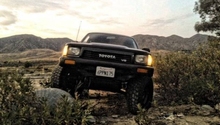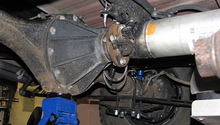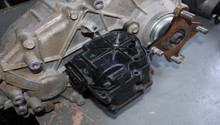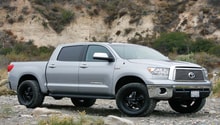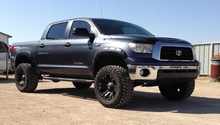Toyota Tundra: 4WD General Information
Are you curious about how 4WD works, especially in regards to the Toyota Tundra? This article will tell you everything you need to know about four wheel drive.
This article applies to the Toyota Tundra (2000-present).
Four wheel drive systems are a very popular option in trucks, and for good reason. They provide extra traction at the push of a button or turn of a knob, which is a big help in slippery conditions presented by snow or mud. Driving the front wheels also means you can climb over rocks and other obstacles much more easily.
The downside of a four wheel drive system is that it requires added components, which means more weight and lower gas mileage. The extra components required to drive the front wheels include front axles and a differential, another driveshaft, as well as a transfer case. When the truck isn't in four wheel drive, the front axles are unlocked and disconnected from those extra driveline pieces. Once you engage 4WD, the front axles lock and receive power from the engine.
Component Breakdown
Transfer Case
The transfer case is located underneath your truck, behind the transmission. It serves to send power to either the front or rear wheels, depending on which mode you are in. When in four wheel drive, the case sends an even, 50/50 power split to the front and rear axles. While generally very durable, the actuator located on the transfer case is a known point of failure on Tundras. The actuator is what actually switches your system between 2WD and 4WD, so failure here will prevent engaging or disengaging from whatever mode you are in at the time.
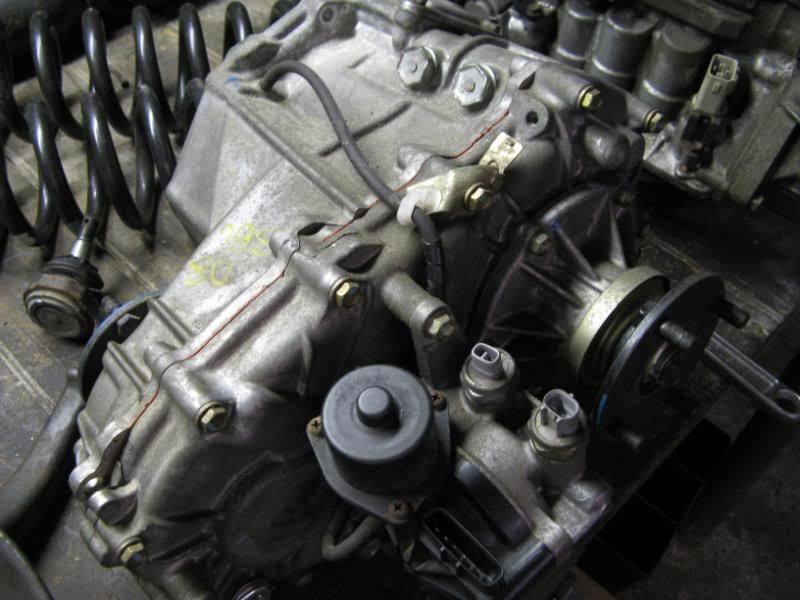
Differential
While conventional 2WD trucks and other vehicles have only a rear differential to drive the rear wheels, 4WD vehicles have a front differential as well, and some vehicles (like older 4x4 Toyotas) even have a center differential. Both the front and rear differentials serve to split power between the left or front wheels. In older vehicles, open differentials were used, which are very rugged and split power equally to each side. The downside is that when one wheel begins to slip, power is sent only to that wheel, which can make the vehicle harder to control. Limited slip differentials, on the other hand, route power to the wheel that isn't slipping, resulting in greater control.
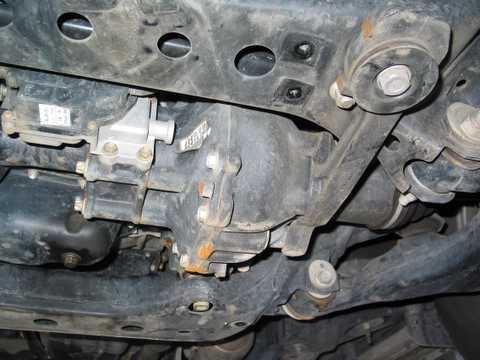
Traction Control and Vehicle Skid Control
Traction control (TRAC) and Vehicle Skid Control (VSC) work in unison to detect when a vehicle is losing control or slipping and take measures to prevent a loss of control. TRAC uses ABS sensors to detect slipping at the wheels, and then applies the brakes, reduces engine RPM's, or use a combination of both to reduce wheel spin.
VSC works as a lateral skid sensor, detecting understeer or oversteer. When the vehicle begins to slide in one direction or another, the system can apply the brakes to 1-3 corners and adjust the throttle to straighten the vehicle up. This allows the driver to continue moving in the direction they are turning the steering wheel, rather than succumbing to the momentum of the slide.

Scheduled Maintenance
Toyota recommends inspecting and adjusting all fluid levels every 5,000 miles or six months. For 4WD models, the front and rear differential oil should be inspected every 15,000 miles or 18 months, and replaced when needed. If you drive on dirt roads or in severe conditions, Toyota recommends that you inspect your drive shaft boots every 5,000 miles as well; otherwise, inspect them every 15,000 miles or 18 months.
Transfer case oil should be inspected every 15,000 miles or 18 months. If you drive under severe conditions or tow frequently, Toyota recommends that you replace the transfer case oil and front as well as rear differential oil at this point.
Related Discussions
- Tundra vs. T100 - YotaTech.com
- Which Tundra Should I Buy? - YotaTech.com
- Toyota Scheduled Maintenance Guides - Toyota.com

